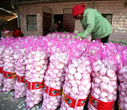Top Biz News
Debate on overcapacity blows up in China's wind power sector
(Xinhua)
Updated: 2009-11-24 13:37
In 2008, China had 20 independently developed types of wind turbines, up from four in 2007, according to the CWEA. It bought 12 technological licenses from abroad, down from 16 in 2007. It had 10 jointly designed turbines, up from eight in 2007.
Much of this progress in forming a complete industrial chain was attributed to the 70-percent localization requirement policy, promulgated by NDRC in 2005.
This required that at least 70 percent of wind power equipment to be produced in China. Wind farms failing to adhere became ineligible for construction approval.
The rate of localization was defined as the portion of total components in a wind turbine manufactured and assembled in China. As long as production occurred domestically, the level of Chinese ownership in factories was immaterial.
The aim was to reduce costs of wind power generation, speed up wind power industrialization, and most importantly to encourage multinationals to invest in and transfer technologies to China.
The National Energy Administration says it plans to cancel the 70-percent localization policy soon to promote free and fair development, but no timetable has been set.
Chen Danghui, technical director of Sinovel, the largest wind turbine producer in the country, said, "Now that we have grown up, the cancellation of the requirement will not have any impact on us. I think the cancellation is better for the entire industry, if all the enterprises compete in an equal and fair market."
Professor Shi Pengfei, vice-president of CWEA, agreed. "We have basically set up an industrial chain. Chinese equipment prices are cheap. Even foreign businesses are ready to buy them in the Chinese market."
Qin said, "We cannot restrict competition simply because of excess capacity. Latecomers often become superior in emerging industries.
"We will promote technological progress and lower costs through market competition. We do not have to worry there are so many competitors at a specific stage."













